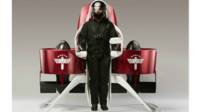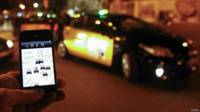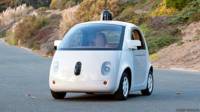- 16 May 2015
Share

Do not take any more traffic jams and crowded train? So why not go to work wearing a backpack-rocket?
The company Nartin Aircraft Company, of New Zealand, is developing a model with the market arrival forecast in 2016. And it actually seems to work.
Despite being designed for use by emergency services, it is not hard to imagine it being used by common citizens towards the office.
More: Awards selects projects for the future of cities
Read more: 15 cars that changed the world
“We would not be surprised if, within five to ten years, people are flying around every day,” says company president Peter Coker.
Of course, at least so far, these individual flying machines still seem far from most of us.
And meanwhile, the populations of large cities are growing at a fast pace, and congestion, pollution and stress tend to increase unless we change our urban transportation systems.
more Sustainable Cities
Some cities are investing in large infrastructure projects. London, for example, is building a railway line of 118 kilometers, the Crossrail.
Other betting on sustainable transport alternatives such as electric buses and bike-sharing systems.
Copenhagen, Denmark, has set a target to become the first capital of the world ” neutral “in carbon emissions by 2025 and invested in a network of public electric bicycles -. what had already been done by other cities such as Paris, France, Madrid and Barcelona, Spain, and Mexico City
Read More: Why we do not have flying cars
Bikes Copenhagen have tablets with GPS installed on the handlebars. Users can reserve and pay for the service by phone.
In other cities around the world, authorities are testing ways to charge the electric bus battery wirelessly, through special platforms in garages.
In the UK, the company Carbon Trust believes that by 2050, 50% of light vehicles will be powered by hydrogen.
Change range
But for many, the radical change does not depend on types of transport -. but the way we use
“In a decade or two, forms of transport may not be as different from those that exist today – we still have buses, subways and trains, “said Paul Zanelli, head of the Transport Systems Catapult Technology, one of seven technology centers set up by the British government in this area
.” But, instead of buying a piece of paper in a train station (the passage) and at the end of the trip, walk to the outside to take a taxi, everything will be integrated “
Read more.: Canada wants skating rink for public transport
Simply decide where we want to go and discover an application the fastest and cheapest way to get there, believe Zanelli.
“The options will be based on the program you know, the traffic situation and even the weather. Then he can come to the conclusion that, as it is a beautiful day outside and your normal route is in trouble, it is best to book an electric bicycle or an automatic taxi. “
For Colin Divall, University Professor York, part of the solution to the problem of public transport depends on better planning.
“The really hard part is organize ourselves in order to, first of all, to minimize the need for people and things move “he says.
” That means making towns and urban areas with a better design. Travel unhurried sometimes it’s better to travel quickly. “
Share

Carlo Ratti, director of the SENSEable City Laboratory at the Massachusetts Institute of Technology (MIT), believes that our relationship with cars is changing.
“We are at the beginning of a revolution. In the future, we will see more and more shared cars in our cities. We anticipate that four out of five cars can get off the streets for a few more years. “
Analyses in MIT’s Laboratory concluded that if people share taxis in New York City, the demand for this transport would fall 40% and yet everyone come wherever
Read more:. Uber offers more comfort, but is more expensive than ordinary taxi
Uber, an application cab, is already stirring with traditional taxi industry The company also launched a race sharing system, the UberPool in August last year -.. what he considered a ‘bold social experiment “
Many car manufacturers, aware that the habit of owning a car is in decline, are also beginning to invest in their own car-sharing systems.
No hands the wheel

An even bigger change may be under way with cars that do not require drivers.
As the ‘Big Data’ will improve Bus SP
With 11 million people and 6 million cars, São Paulo is known for its traffic jams.
Now, a project funded by the World Bank is using analysis of large volumes of data – a technique known as “Big Data” – to improve the city’s bus system, as reported by the reporter Rafael Barifouse, BBC Brazil
The American firm Urban Engines is analyzing 30 million data generated by the 15,000 buses equipped with GPS and passengers. using the card system for payment of passages, the Single Ticket.
The information is used to create a digital map that shows in real time how many passengers are using the fleet, the time of each trip and which routes are underused or too full.
Ciro Biderman, director of SP Trans, the municipal body responsible for managing the São Paulo system, says the pilot program has shown a surprisingly high number of buses circulating under 15% capacity.
“No one complains when the bus is very empty, so our research showed not that,” Biderman says.
Data analysis is also helping to identify bus companies that do not meet contractual obligations. System improvements should begin to be implemented in the second half, according to Biderman.
“The technology already exists. These autonomous cars will go on sale next year. Cars that have the potential autodirigem to generate a huge impact on city life, it will be more difficult to distinguish between forms of public and private transport, “says Ratti of MIT
Read more:. Public transport should be free?
“Your car can take you to the morning’s work, then instead of getting stopped in the parking lot, can carry another person in your family – or even a neighbor, acquaintance or anyone else who lives in same city. “
It should be noted that many experts are skeptical about the immediate prospects of these new cars, given the legal challenges, regulatory and technology that they still face.
Social Networks
A world without traffic jams may seem a distant reality or even a utopia when you are on a train platform being told that the service was interrupted for some reason.
But at least social media and analysis of large data volumes are already helping us to create more intelligent transportation alternatives or to manage our transportation systems more efficiently.
In Brazil, for example, vehicle data analysis and passengers has been identifying flaws in the São Paulo bus system (read the sidebar)
Read more:. São Paulo forehead software to modernize management ‘archaic’ Coaches
Many of us use social networks to check for delays or cancellations of transportation systems in the accounts of providers of these services and acquaintances.
Map social media provides valuable data for transmission system operators, according to Mike Saunders, president of the Commonplace, a company specializing in this type of analysis.
“A lot of information is generated by Twitter and it can be used to understand problems and delays,” he says .
“The toughest challenge is to ensure that data is accurate and foolproof.”
In the face of all these innovations, we can say that the urban transport of tomorrow promises to be more sustainable, clean, integrated, intelligent
But for millions of people who are frustrated around the world with the alternatives available today, it is important that future turn even reality -. and soon.
No comments:
Post a Comment